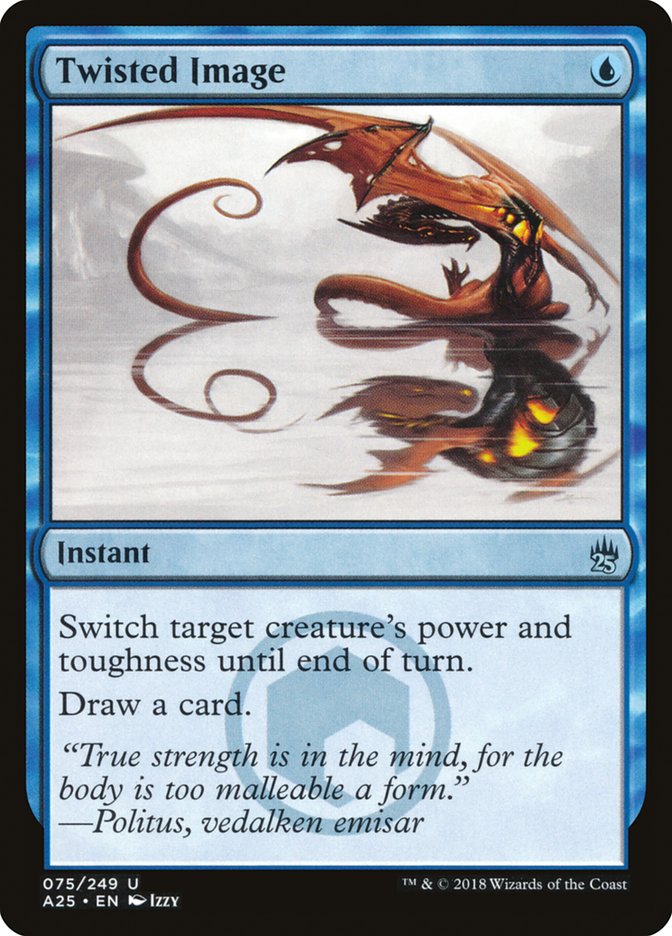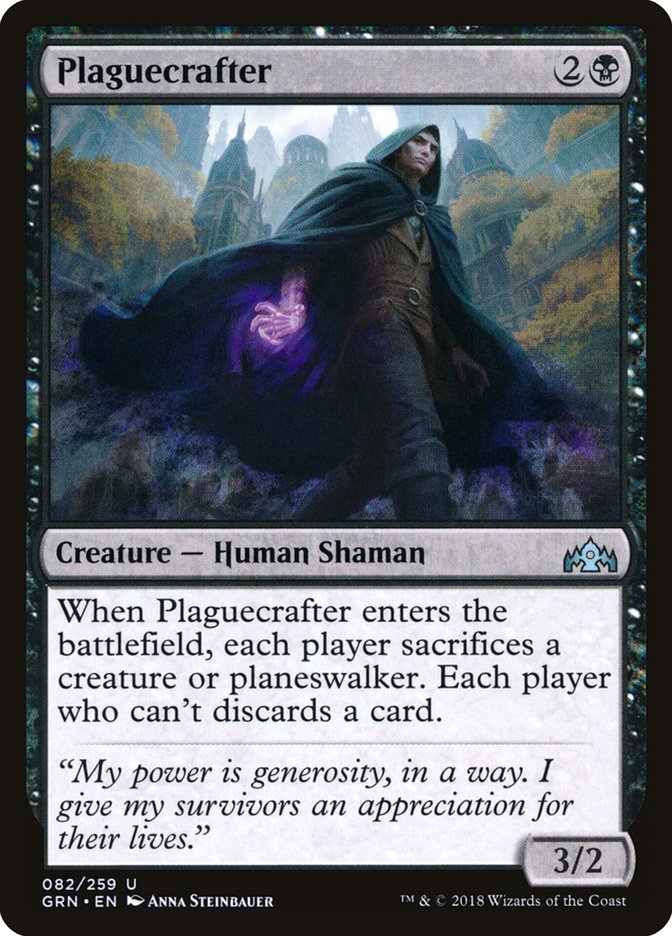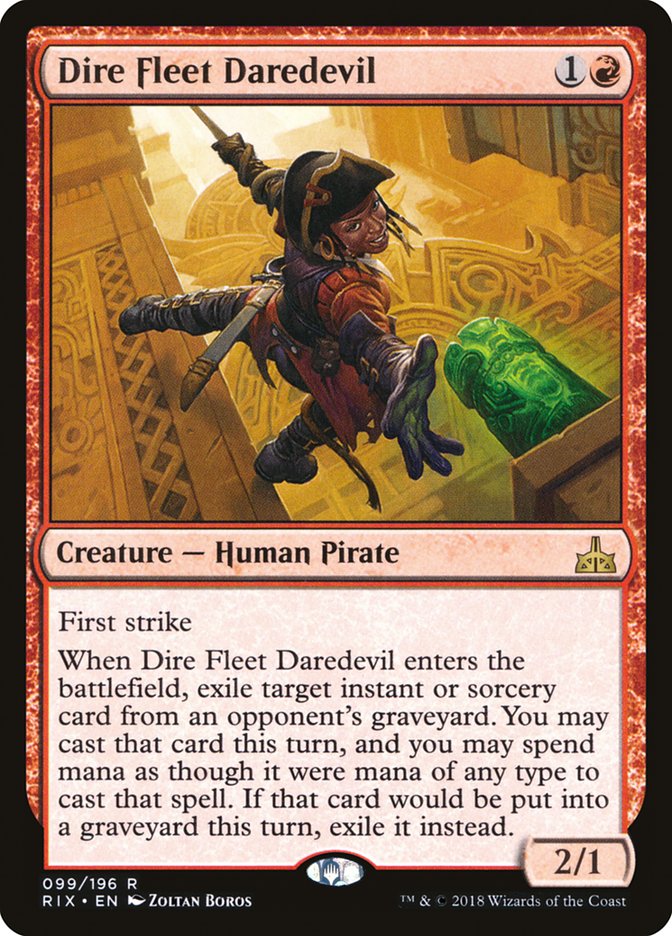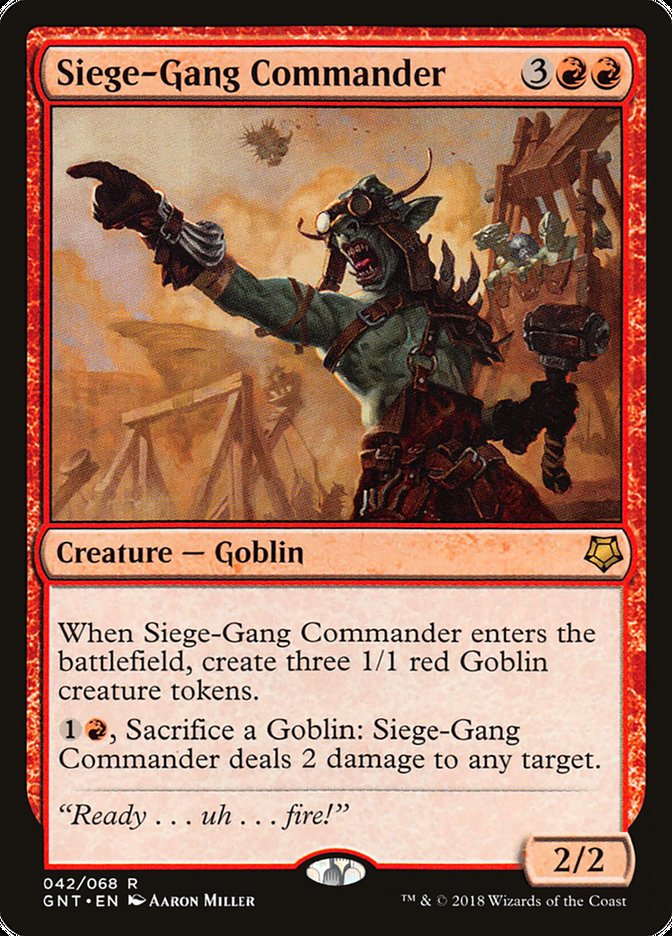Welcome to What We’d Play! With the Season Two Invitational this
weekend, many are unsure what they’d play in such a high profile
tournament, especially one with two formats. That’s where we come in
and let you know what we’d play and why we’d play it. Hopefully this
last minute advice aids in your decision-making! Be sure to vote for
who you agree with in the poll at the end!
Emma Handy – Infect (Modern) and Golgari Midrange (Standard)
Creatures (13)
Lands (20)
Spells (27)

The more things change, the more they stay the same.
After pledging to play Ironworks until the deck got banned, the nightmare
scenario occurred last weekend in Baltimore and the most represented deck
in the tournament was a deck that plays between three and four copies of
Stony Silence on top of Rest in Peace and Spell Queller. Not a good time to
be playing an artifact deck that uses the graveyard and relies on a couple
of payoff cards…
Bant Spirits is the most popular fair deck in the format and is incredibly
forgiving. This means we can expect a reasonable uptick in the deck going
into this weekend, and with Ross Merriam doing well with his version of a
deck that fits a style that people love to play, I would expect the same
from Izzet Phoenix. With that idea out the window, it’s time to sleeve up
ol’ faithful.
Enter Twisted Image.
With these being the two biggest decks I expect to face on the weekend,
having a way to interact with the first-turn Noble Hierarch, as well as
deal with the only form of removal that your protection spells can’t save
you from (Thing in the Ice), it’s time to dust off the old technology and
give it the respect it deserves.
The fact that Infect is making a comeback and Twisted Image is the most
important card in the mirror as a result of Spellskite’s existence does a
lot as well to help justify its inclusion. Worst case scenario, it’s fairly
easy to cycle.
People are still doing fairly linear things in the format, despite Jeskai
Control looking like it did well last weekend. What really happened is that
the same people who always play Jeskai did so, and then two Platinum-level
pros played decision-intensive strategies to quarterfinals appearances.
Jeskai may have been a quarter of the Top 8, but in reality, Seth Manfield
and Brad Nelson played well and Jeskai was the deck they were playing.
When people are doing linear things, Infect is the best deck in the format.
It has the most consistent turn-3 kills and has just enough play to
interact with all the less interactive strategies that people are bringing
to the table.
I’m not 100% positive on where cards will fall between the maindeck and the
sideboard, but these are likely 74 of the cards that I’m playing this
weekend, with the only card I’m really waffling on at this point being a
third Breeding Pool over the ninth fetchland.
With the #SCGINVI playoffs being best of five in Modern, having a deck that
can punish fail rates while having a consistent kill of its own, is going
to put Infect as the best thing to play in Modern. It isn’t an accident
that the deck has more Invitational wins than any other archetype.
Creatures (25)
- 4 Llanowar Elves
- 2 Carnage Tyrant
- 4 Wildgrowth Walker
- 4 Merfolk Branchwalker
- 1 Seekers' Squire
- 4 Jadelight Ranger
- 2 Ravenous Chupacabra
- 2 Midnight Reaper
- 2 Plaguecrafter
Planeswalkers (3)
Lands (24)
Spells (8)

Despite the 75 cards I’m registering for Standard not being as set in stone
as the cards for Modern, I’m absolutely positive that Golgari Midrange is
the thing to be playing this weekend. The talk around the internet is that
Standard is effectively boiling down to Niv-Mizzet, Parun versus Carnage
Tyrant.
The reason to lean into Carnage Tyrant is that Overgrown Tombs may not have
the same card advantage as Steam Vents, the card advantage that Overgrown
Tomb fuels is proactive. This leads to situations in which the Golgari deck
is accruing cards while killing the opponent, and the blue decks are having
to either take time off in order to net cards via Chemister’s Insight or in
the cases of cards like Star of Extinction and Settle the Wreckage, it’s
simply stopping them from dying.
Outside of archetype specialists that always play control in all formats,
it’s going to yield better results to simply do the thing that wins the
most games, and the proactivity of Golgari lends itself to closing games
more effectively than Search for Azcanta and friends.
As far as specifics in the list go, stop playing Druid of the Cowl. The
card is nonsense and is basically always getting sideboarded out. Seekers’
Squire, while also nonsense, sometimes has the extra text “gain 3 life, put
a +1/+1 counter on a creature you control.” It ain’t pretty, but there’s at
least a ceiling better than “Play my six-drop a turn early in a deck that
plans to go to turn 10.”
The Karn, Scion of Urza slot is the single slot I have been flipping on the
most in the last day or so. Vraska, Relic Seeker is a powerful card, but
just costs so much mana for something that people are mostly prepared for
at this point. Karn isn’t really that much better, but being a Divination
that also creates favorable combat trades or removal exchanges with the
opponent does serve a reasonable role, and even has the upside of sometimes
running away with a game!
The final card that may seem out of place for anyone who’s tuned out of
Standard for a couple of weeks is Plaguecrafter:
The Plaguecrafter package with Midnight Reaper is effectively planting this
list as anti-slow decks while giving up percentage points against the
aggressive strategies. Midnight Reaper’s strength is obvious when people
are looking to exchange cards, but Plaguecrafter’s takes a little more
thought. The big point to drive home with Plaguecrafter is that it’s
effectively Hero’s Downfall against the Jeskai and Izzet Drakes decks, and
it can’t even be protected from via Dive Down. Combine that information
with the fact that Plaguecrafter pairs magnificently with Find, and it’s
clear why the card is in this iteration of the deck, when Niv-Mizzet is
expected to make such an appearance during the Standard portion of the
Invitational.
Dylan Hand – Bant Spirits (Modern) and Jeskai Control (Standard)
Creatures (31)
- 1 Birds of Paradise
- 4 Noble Hierarch
- 3 Phantasmal Image
- 4 Drogskol Captain
- 4 Reflector Mage
- 4 Spell Queller
- 3 Selfless Spirit
- 4 Mausoleum Wanderer
- 4 Supreme Phantom
Lands (20)
Spells (9)

Spirits is simultaneously a solid, disruptive, and flexible creature deck
that’s currently capitalizing on a metagame that runs very cold against
white sideboard cards, like Stony Silence and Rest in Peace. It pains me to
say that this is disruptive aggro deck of choice over Humans, but I think
I’m ready to turn to the dark side and highly suggest others do the same
(for now!)
The maindeck 60 is likely what I’ll register for the Season Two
Invitational, while the sideboard is a mild experiment at the moment (see:
Gideon, Ally of Zendikar). The removal of the Cavern of Souls in favor of a
Birds of Paradise is a nod to having more turn 2 Spell Quellers and turn 3
Collected Companies, two of the best plays this deck has to offer. The full
four Reflector Mages give you great game against other creature decks, as
well as Grixis Death’s Shadow and Arclight Phoenix strategies, two decks
that have seen a surge in popularity leading into the weekend. Between a
powerful suite of 31 maindeck creatures and the best sideboard cards Modern
has to offer, it’s hard to go wrong with Bant Spirits for rounds 5-8 and
13-16 of the Invitational.
Creatures (6)
Planeswalkers (4)
Lands (26)
Spells (24)

Jeskai Control is my front runner for the Standard portion of the Season
Two Invitational. I believe that, like Golgari Midrange, the deck is
incredibly multidimensional in both the threats and answers that it can
play and can be tuned to beat anything it wants with little deckbuilding
cost. Like Izzet Drakes, this deck utilizes the best creature in Standard,
Niv-Mizzet, Parun, to great effect, but has a much more powerful supporting
cast, thanks to Teferi. The Hero of Dominaria works in tandem with
Niv-Mizzet to create an enormous headache for your opponents, since they
attack on very different angles, and each wins the game on their own
without the need for cards like Dive Down to protect them. My only warning
I would like to give when playing this deck is that its biggest enemy is
itself, as the mana in the deck leaves a lot to be desired without the
presence of Hallowed Fountain. Considerations such as these means that you
may want to play Ionize over Sinister Sabotage as your three-mana hard
counter of choice, for example. That being said, I think this deck’s power
level exceeds that of the other decks in the format, and if both you and
your opponent get to do your thing, you’ll come out on top much more often
than they will.
Ari Lax – Grixis Death’s Shadow (Modern) and Jeskai Control (Standard)
Creatures (16)
Lands (17)
Spells (27)

This is again a speculative call, just like Burn last week. I might fall
back to an Ancient Stirrings plus good lands strategy, either Mono-Green
Tron or Amulet Titan. That makes my three choices an aggressive
Thoughtseize deck, an intricate but deterministic combo deck, and the deck
I played last Modern Pro Tour. Hopefully that’s my wheelhouse in some form.
I have three goals for this SCGCON – don’t lose to Lightning Bolt, don’t
lose to Spell Queller, and don’t lose to graveyard interaction. Grixis
Death’s Shadow is fairly good against Lightning Bolt, Snapcaster Mage +
Lightning Bolt is one of the best things to do against Spirits, and you can
make your Grixis deck good against graveyards if you want.
My big concern is that the overlap of Snapcaster Mage or Arclight Phoenix
with Lightning Bolt makes your life total too fragile. The very old Death’s
Shadow decks had this kind of issue with Splinter Twin, but after that deck
was banned, basically no one regularly paired flashed back their Lightning
Bolts for a long time. Good thing there’s another day to test this out!
Creatures (6)
Planeswalkers (3)
Lands (25)
Spells (26)

I loved Jeskai before the Treasure Map technology
, so I obviously still love it now. Alternating between slamming an
unbeatable six-drop threat and countering or sweeping up all their cards is
exactly my jam in Standard. I’ve made a couple quick swaps to Joel
Sadowsky’s list from the Standard StarCityGames.com Baltimore Classic based
on my past experience with the deck.
Explosion is often really clunky, even with Treasure Map. That’s a shave. I
love hard counters, possibly too much, so there’s another Ionize. I think
Settle the Wreckage is really bad and just the best game 1 concession to a
sweeper, so the sideboard copy becomes a Cleansing Nova. Legion Warboss is
a good mirror threat, Sarkhan, Fireblood is trying to get too cute. Enigma
Drake over Crackling Drake is offensive to me, so that’s an easy swap.
Maybe I should be playing Golgari over Jeskai or Ben Friedman’s other
Treasure Map + Niv-Mizzet, Parun deck, but as long as you select Golgari,
Jeskai, or Izzet, I can’t imagine you are too far off.
Danny West – Selesnya Hexproof (Modern) and Big Red
(Standard)
Creatures (12)
Lands (21)
Spells (27)

Is this the same archetype I post every time for What We’d Play? So far,
pretty much. The thing is, the graveyard strategies of Modern are always
taking off the heat. Everyone needs their graveyard hate slots so bad to
sleep at night that this obnoxious Enchantress knockoff never has to take
any of the guff. Someday when Modern sideboards are twenty cards, maybe the
miser’s Back to Nature will get us. Until then, we’re free to roam the
countryside with our pet Bogles.
Mulligan aggressively, play against Burn a lot. You’ll do great.
Travel has me scheduled to show up at The Command Zone around lunch time
tomorrow. On Saturday, I should note that I am taking a Commander break to
spend some time with this archetype at a qualifer for Sunday’s Cube
Championship! Sorry, Command Zone. Daddy needs his Cube time.
I’ll use the rest of my time to bury the notion that Jeskai Control still
isn’t a good deck. Brad and Seth are excellent players, but this is 2018.
The difference in the greats and everyone else is smaller than ever, and
these guys are among the very best…but they’re not omnipotent or perfect.
Competitive players don’t show up to a money event with a deck they think
sucks. They want to win. Jeskai Control is a good and competitive
Modern deck. To the discerning Modern eye, it is counterintuitive, but it
is also provably true.
Cope.
Creatures (20)
- 4 Siege-Gang Commander
- 4 Rekindling Phoenix
- 4 Dire Fleet Daredevil
- 4 Goblin Chainwhirler
- 4 Legion Warboss
Lands (25)
Spells (15)
Sideboard

I haven’t played much Standard over the last several weeks, and the
Selesnya Tokens deck does look like my default playstyle, but
this deck architecture
by Ben Weitz is too unbelievable for me to pass up. Screw tokens. It’s
going to be on a minor upswing this weekend, so just call up The
Chainwhirler and show em who the real winner of this triple mono-color rare
cycle is. (Hint: It’s not Benalish Marshal.)
The Jeskai and Golgari decks will be the room. I’d have zero interest in
trying to gain edges here because everyone will know these matchups
extremely well. If I’m trying to win the tournament, I’m not doing it with
a weapon everyone else has and that I have less time with. That’s a suicide
mission.
Big Red is a very rare subarchetype of red deck that shows up to be laughed
at for about a week once every six or seven years. I think this version is
one of the better we’ve seen since the Demigod of Revenge days, where red
was so good it could cover most of the aggro and midrange parts of the
metagame without making any concessions.
Basically, the Big Red deck shows up when the metagame is exactly friendly
enough for it by way of red removal lining up universally well against most
of the format’s go-to threats. Then, it needs either a big playable X spell
that can finish games or a Koth of the Hammer-style powered up
planeswalker. In this case, it’s the always beloved Banefire, though the
planeswalker angle will be welcome when Jaya comes in against the decks
that think they can go long with impunity. Who doesn’t want to effectively
threaten to double the amount of removal spells they have access to? If the
first several Banefires don’t get them…
And let’s not forget the very definition of well-positioned:
The Izzet decks are all begging to see how many spells they can get into
their graveyard for their dumb Drakes. Take a few of them for yourself.
Crackling Drakes still get pumped a tad from the spell eventually ending up
in exile, but that’s perfectly fine; you’re a mono-red deck that just cast
Chart a Course.
Lastly, shoutout to my homeboy Scourge original for getting the
Gang back together after all these years. I’ve thrown some parties, I’ve
thrown some Goblins. I’ve thrown some Goblins at some parties.
SCG CON is this weekend. Show up to party and throw Goblins.
Brad Nelson – Jeskai Control (Modern) and Golgari Midrange (Standard)
Creatures (4)
Planeswalkers (3)
Lands (25)
Spells (28)

Creatures (4)
Planeswalkers (3)
Lands (25)
Spells (28)

Last weekend I piloted Jeskai Control to a Top 8 finish at #SCGBALT. Along
the way to this finish, I was confronted by thirteen different people
asking me why I’d play Jeskai Control as if it was a terrible deck choice.
That’s right – thirteen people came up to me to inform me of their
disdain of this deck! The problem is I just don’t see it. There’s plenty of
creature decks running around, very few terrible matchups (like Dredge),
and on top of all that, every experience I’ve had with the deck has been a
pleasant one. In fact, going into this past weekend I already had a 68% win
percentage with the deck which I thought was great for never playtesting
the format.
My working theory to why others dislike this deck is that no one else has a
Benjamin Nikolich or a Jonathan Rosum at their disposal. These two kids are
simply amazing! I haven’t spent much of my time on the SCG Tour as of late,
so I didn’t know it myself, but lately we’ve all been exchanging format
knowledge. They help Corey Baumeister and I in Modern, and we help them in
Standard. I’ve been absolutely blown away by the depth of their knowledge
on this deck. Each new build they give me is wildly different than the
last, but always seems great for the weekend. I’m confident that these two
will be a part of Magic’s future (well, once they learn how to draft…)
Luckily for you, there’s no need to have your own Benjamin Nikolich or
Jonathan Rosum this weekend. I have it on good authority (me) that they
were so happy with the list from Baltimore and that they don’t plan on
changing much. That means this list should be good to go for this weekend!
Creatures (24)
- 4 Llanowar Elves
- 2 Druid of the Cowl
- 3 Carnage Tyrant
- 3 Wildgrowth Walker
- 4 Merfolk Branchwalker
- 4 Jadelight Ranger
- 2 Ravenous Chupacabra
- 2 Midnight Reaper
Planeswalkers (5)
Lands (23)
Spells (8)

You’re shocked, I know. Who could have guessed that I’d play Golgari
Midrange at this season’s #SCGINVI? Right now, you must be thinking to
yourself, “Brad your range of deck selection is inspiring,” but I’ve worked
really hard to get to this stage in my career. It’s not easy always playing
outside of your comfort zone, but sometimes you’ve to get bold to be
successful in Standard.
Seriously, though, Golgari Midrange is just the best deck. Not by the wide
margins we’ve become accustomed to in recent Standard metagames, but still
just enough to justify this choice. I worked on other decks like Jeskai
Control, Izzet Drakes, and Big Red, but they all seem to have more issues
than Golgari does.
The good thing about Standard, though, is that not only do you need to
select a deck, but you also have to adapt it to an expected metagame. I
predict a high density of Niv-Mizzet, Paruns in my near future, and many of
those wielding the Dragon will be protecting it with Dive Down. Therefore,
I want more Edict effects in my 75.
I also despise Assassin’s Trophy, but think it will be a necessity for the
weekend. Some Golgari pilots are leaning on Detection Tower or The Immortal
Sun for the mirror. I don’t want to have zero answers for these cards, but
at the same time don’t want to sideboard in weak cards like Reclamation
Sage or Thrashing Brontodon. Sacrifices must be made, and this is one of
them.





